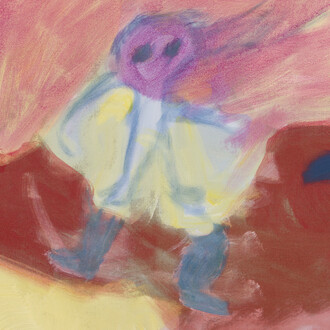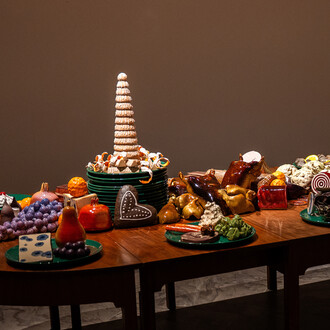We live on a wounded planet. The areas of untouched nature on earth are diminishing, the ecosystem change and species are being eradicated – biologists consider the sixth mass extinction on planet earth to be a reality. Climate change is the biggest challenge of our times. The exhibition Precious Planet presents themes of climate change, ecology, art and life. ARKEN has invited the artists Astrid Myntekær and Amalie Smith to create site-specific works in dialogue with the artificial landscape surrounding the museum.
With new works, Myntekær and Smith unveil different dystopian scenarios for the future. Climate change, hybrid being, and a bank for art are elements in a world where radically new values for art and survival are at stake.
Three oversized conches have washed up on the beach. In these hybrid creatures, human faces emerge from their pink interiors. The colourful conch have given rise to many myths through the ages. Today, the species is threatened by global warming. The Hermit adds yet another layer to the mythical significance of the conch. Simultaneously strange, seductive and sinister, these sculptures herald a new kind of co-existence where the power balance between man and nature is renegotiated.
In the sound piece 51 e.DSO we are invited on a walk in the landscape surrounding the museum to listen to a dystopian story of the future. The recordings are made in the year 51 after The Last Oil. ARKEN is being remodelled as a ‘bank for man-made art’. It has become clear that mankind will not survive the impending catastrophes. What art should be preserved? How should the history of humanity be mediated to a future without any humans – and who will listen?
Astrid Myntekær (b. 1985) studied at Hochschule für bildende Künste (Hamburg) and the Royal Danish Academy of Fine Arts. Myntekær’s works operate in the intersection between sci-fi, mysticism, and science. Her installations draw on a broad spectrum of materials, including light, masks, algae dust, plants, rush mats, and technology. In Myntekær’s universe contemporary issues are addressed through unforeseen connections.
Amalie Smith (b. 1985) studied at the Royal Danish Academy of Fine Arts and the Danish Academy of Creative Writing. Smith investigates the relationship between narrative and phenomenology in books, films, sound and installations. She probes the way we sense, comprehend, and categorise the world. Smith often works with montages in which the traces of different narratives and disciplines are intertwined in order to challenge and cross-fertilise each other.












